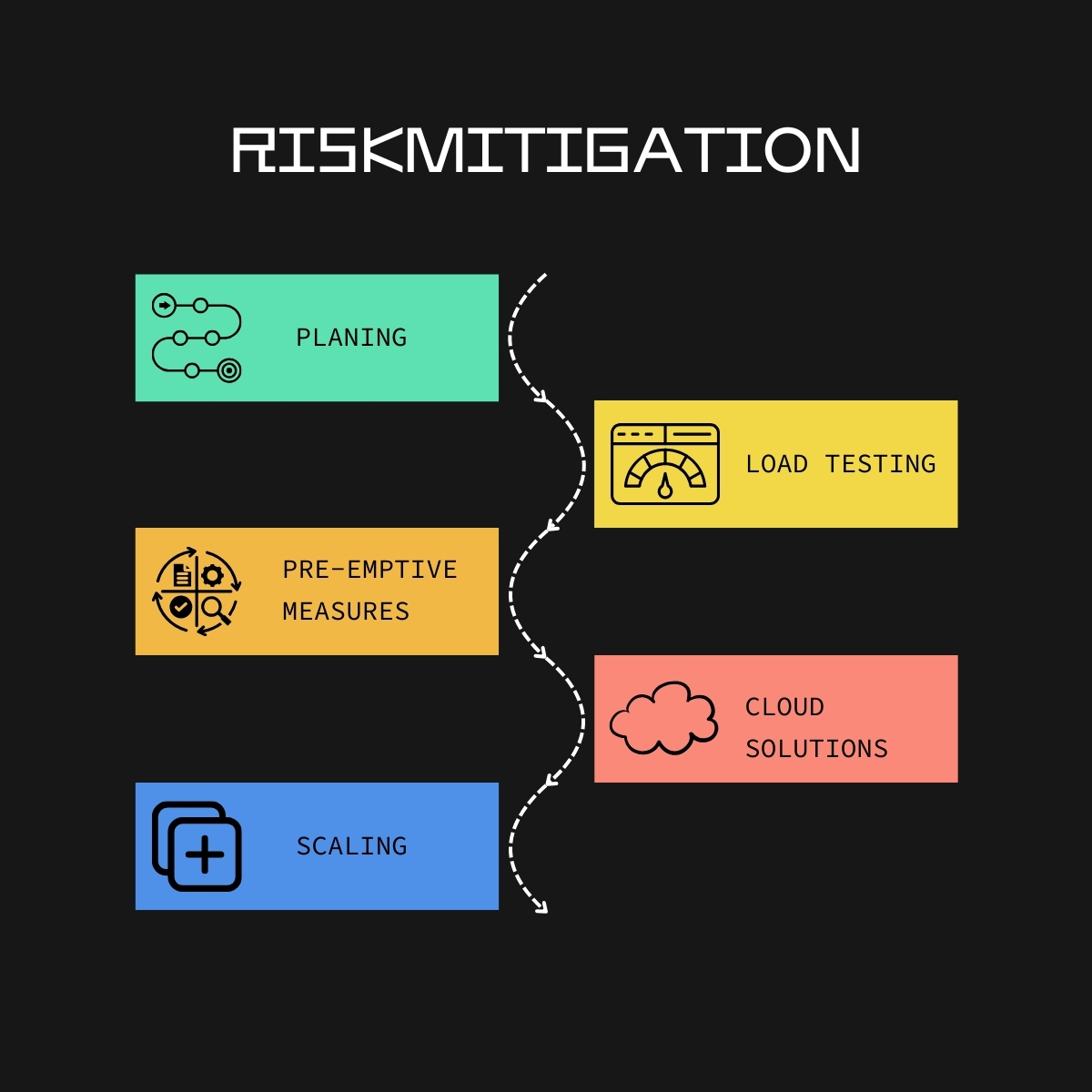
E-Commerce zu betreiben ist spannend – aber manchmal auch ein echtes Minenfeld. Von technischen Ausfällen bis zu Performance-Problemen kann es in den ungünstigsten Momenten knallen.
Heute läuft alles rund, morgen ist plötzlich der Checkout leer – und das ausgerechnet, wenn der Traffic am höchsten ist.
Für jeden E-Commerce-Manager ist das der blanke Horror – und leider gar nicht so selten.
In einer Welt, in der Downtime richtig teuer wird, brauchst du unbedingt einen Notfall-Plan.
Wir bei unserer Magento-Agentur haben schon alle Arten von Krisen erlebt. Aber statt nur zu löschen, wenn’s brennt, setzen wir auf proaktive Maßnahmen, um Risiken vorher zu erkennen, zu managen und frühzeitig abzufangen – damit aus kleinen Problemen keine Katastrophen werden.
Fangen wir mit einem Beispiel aus der Praxis an, das zeigt, wie’s schiefgehen kann – sogar bei wichtigen Events.
Vor ein paar Jahren haben wir mitten in einer Hochphase einen Shop übernommen – und prompt war der Checkout komplett leer. Hochbetrieb, Kunden wollen kaufen, aber niemand kann den Kauf abschließen.
So ein Ausfall frisst in ein paar Stunden richtig viel Umsatz weg.
Wir sind direkt ins kalte Wasser gesprungen, haben das Problem auf dem Livesystem priorisiert und angefangen, direkt zu debuggen.
Unser berühmter „Monkey Patch“ kam zum Einsatz – ein temporärer Hotfix, direkt auf dem Server, um erstmal die Wunde zu schließen.
Das hieß: Fehler im Code aufspüren, Ausgaben loggen, Ursache finden – alles live und unter Druck.
Nach ein paar Stunden war der Fehler lokalisiert, der Checkout lief wieder. Aber da hört’s bei uns nicht auf:
Wir haben danach das Problem sauber analysiert, die Ursache gefunden und eine langfristige, saubere Lösung gebaut.
Der Kunde war schnell wieder am Start – der große Umsatzverlust konnte abgewendet werden.
Diese Erfahrung war ein Weckruf: Die größten Risiken kommen oft aus Projekten ohne sauberes Testing und durchdachte Workflows.
Das hat uns noch mal deutlich gemacht, wie wichtig Prävention und gute Infrastruktur sind.
Risiko-Management ist nicht nur Reaktion, sondern Verstehen.
Kommt ein Kunde mit einer neuen Idee – Feature, Integration, Update – helfen wir, die Risiken zu bewerten.
Gute Partnerschaft heißt für uns: Den Kunden durch die Entscheidungsfindung begleiten, oft auch raten, lieber Schritt für Schritt vorzugehen, um Risiken zu minimieren und trotzdem echten Mehrwert zu liefern.
Ein Kunde wollte eine neue Zahlungsmethode einführen – eigentlich ein tolles Feature.
Bei der Analyse zeigte sich aber: Die Schnittstelle des Drittanbieters war komplex, fehleranfällig und riskant, wenn man sie nicht sauber testet.
Unser Vorschlag: ein Phasenmodell.
Statt alles auf einmal einzubauen, in kleine Schritte zerlegen. So konnte der Kunde das Feature einführen, ohne das komplette System aufs Spiel zu setzen.

Genau solche Beratung spart am Ende Zeit, Geld und Nerven – weil die Umsetzung sauber geplant und getestet ist und zum Geschäftsziel passt.
Features sind cool – aber ohne Risikoabsicherung ist langfristiger Erfolg im E-Commerce Glückssache.
Es gibt einige Risiken, die im E-Commerce immer wieder zuschlagen. Ohne gutes Management führen sie zu Downtime, Umsatzeinbußen und Image-Schäden.
Hier die häufigsten Fallen – und wie wir sie angehen:
Ein riesiges Risiko: unzureichende Tests.
Gerade wenn Länder, Sprachen oder Währungen ins Spiel kommen, werden Edge Cases gerne übersehen.
Viele Kunden denken, sie hätten alles getestet – aber die fiesen Details gehen oft unter.
Unser Ansatz: Automatisierte Tests für Standard-Flows und manuelle Tests für alle fiesen Spezialfälle.
So werden nicht nur die Klassiker geprüft, sondern auch seltene Problemfälle.
Das Ergebnis: Nach dem Go-Live gibt’s kaum böse Überraschungen für dich oder deine Kunden.
Gerade kleinere Shops geraten bei Traffic-Spitzen schnell ins Schwitzen.
Aktionen, Flash Sales oder virale Hits können Server überfordern – langsame Ladezeiten oder Abstürze inklusive.
Wir planen große Events im Voraus und empfehlen unseren Kunden, die Serverkapazität rechtzeitig hochzufahren.
Steht eine große Kampagne an, setzen wir auf skalierbare Setups – nach der Aktion wird wieder runtergeschraubt, damit die Kosten nicht explodieren.
So bleibt der Shop schnell, wenn’s drauf ankommt – und das Budget bleibt im Rahmen.
Feste Server ohne Flexibilität sind bei überraschendem Traffic schnell überfordert.
Ohne Planung crasht der Shop ausgerechnet zu Hochzeiten wie Weihnachten oder im Sale.
Wir entwickeln mit unseren Kunden flexible Infrastruktur-Strategien.
Je nach Traffic empfehlen wir Autoscaling oder planen gezielte Kapazitätserweiterungen für Peak-Zeiten.
So vermeiden wir teure Ausfälle und peinliche Downtimes bei wichtigen Anlässen.
Aus Erfahrung wissen wir: Die meisten Risiken – egal ob Technik, Performance oder Features – lassen sich mit guter Planung, gründlichem Testing und klarer Kommunikation vermeiden.
Unser Workflow bindet all das von Anfang an ein – plus Echtzeit-Monitoring und transparente Feedback-Loops mit unseren Kunden.
Gutes Risiko-Management heißt nicht: Risiko vermeiden, sondern wissen, wo es lauert und vorbereitet sein.
Wir helfen, Problemzonen vorherzusehen und Notfall-Pläne zu machen.
Egal ob Backup-Server, feste Deploy-Zeitfenster oder Rollback-Plan – mit guter Vorbereitung bleiben Probleme beherrschbar.
Ist ein Projekt live, überwachen wir es mit Echtzeit-Tools: Performance, Servergesundheit und Nutzerverhalten.
So entdecken wir Probleme frühzeitig – bevor sie zur Krise werden.
Zum Beispiel erkennen wir Traffic-Anomalien oder lange Ladezeiten sofort und können gegensteuern, bevor es kracht.
Für uns ist Transparenz der Schlüssel für gutes Risiko-Management.
Wir halten Kunden über potenzielle Risiken, Probleme oder Änderungen immer in Echtzeit auf dem Laufenden.
Wenn es darauf ankommt, weiß jeder Bescheid – und Entscheidungen werden schnell und gemeinsam getroffen.
Damit unsere Kunden sicher durch den E-Commerce-Alltag kommen, setzen wir auf bewährte Best Practices:
Im E-Commerce sind Notfälle unausweichlich.
Aber mit guter Vorbereitung, Planung und Erfahrung lassen sich Schäden minimieren.
Ob leerer Checkout, Traffic-Explosion oder verrutschtes Feature – wir haben die Tools, Erfahrung und Strategie, damit dein Shop am Laufen bleibt.
Am Ende des Tages: Risiko gehört dazu, aber man muss es nicht dem Zufall überlassen.
Mit vorausschauender Planung, gründlichen Tests und Monitoring halten wir Risiken klein.
Egal ob unerwartete Krise oder geplanter Traffic-Boost – wir sorgen dafür, dass dein Shop läuft. Immer.
Buche dir einen Slot bei Matthias, unserem Spezialisten für Risikominimierung.
